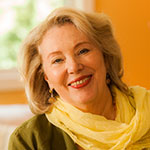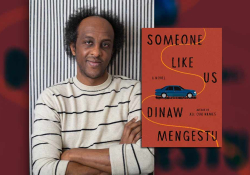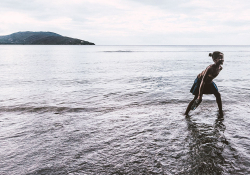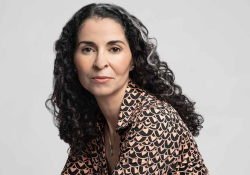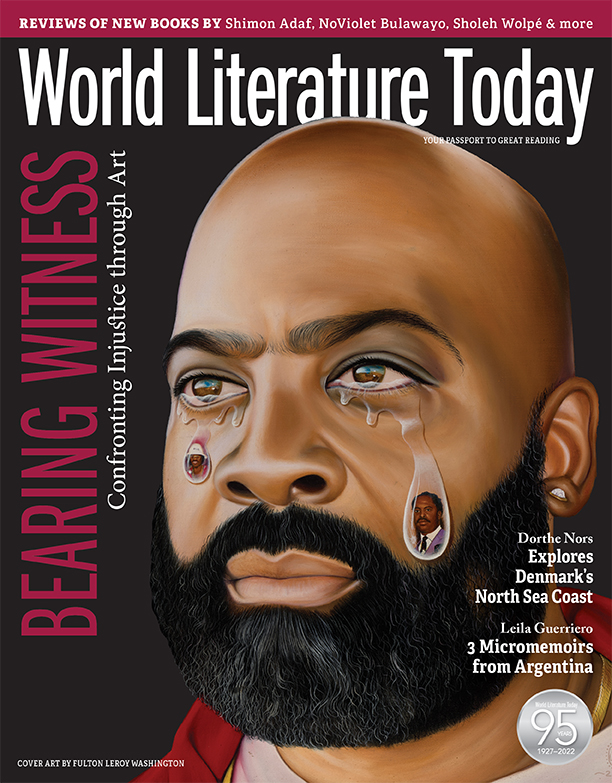“Radical Empathy” in City of Incurable Women: A Conversation with Laura Larson
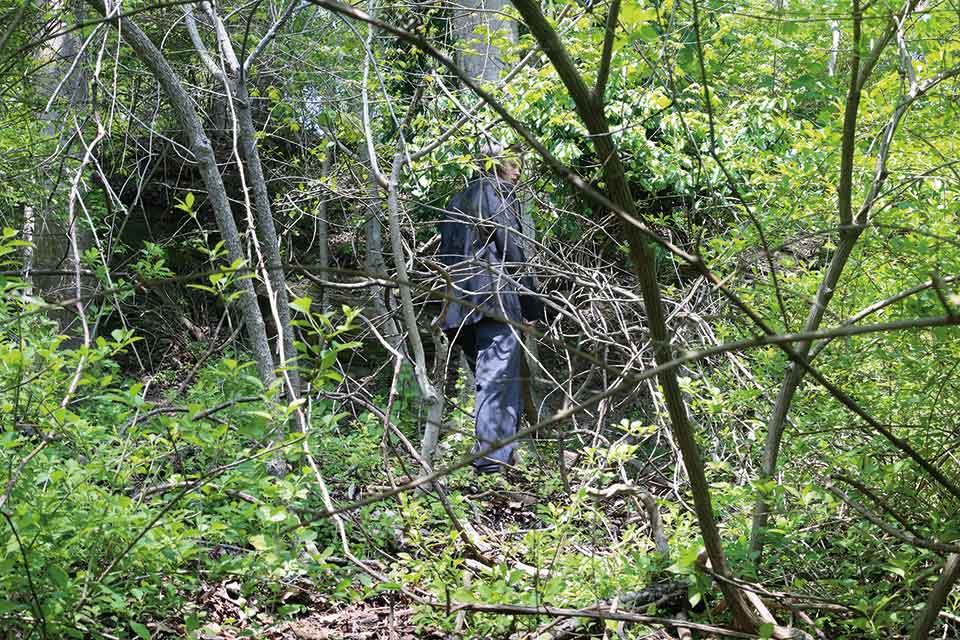
In City of Incurable Women (Saint Lucy Books, 2022), Laura Larson continues her study of nineteenth-century photography, this time through responses to Pitié-Salpêtrière Hospital in Paris, founded in 1656. She focuses on the late 1800s when Jean-Martin Charcot, then director of the hospital, photographed women diagnosed with hysteria. In her book of visual and written texts, Larson explores the depiction of four patients in the hospital (Blanche, Genevieve, Augustine, and Jane) as she reimagines them through the perspective of a contemporary political climate that seeks to control women’s bodies—and resistance to that climate. “I want a liquid chronicle of La Salpêtrière,” she writes, “a volatile flow of chemistry detonating then and now.” Her reflections interrogate the limitations and possibilities of photography as objective documentation, memory, and witness.
Larson has exhibited her work nationally and internationally, including in the Bronx Museum of the Arts, Metropolitan Museum of Art, Wexner Center for the Arts, and Museum of Fine Arts in Houston. Her first book, Hidden Mother (2017), was shortlisted by Aperture / Paris Photo for the Best First Photobook Award. She holds a BA from Oberlin College and an MFA from Rutgers University. Professor emerita at Ohio University, Larson is currently visiting faculty with the Vermont College of Fine Arts MFA program in visual arts.
Renee Shea: City of Incurable Women includes archival photographs from the Iconographie photographique de la Salpêtrière, published between 1876 and 1880 as a medical reference book, interwoven with writings from Charcot, other historical texts, your own photographs, and your lyrical written responses. How did this project begin and evolve?
 Laura Larson: The book started at a very basic level for me of looking at the photographs produced at Salpêtrière under the directorship of Charcot. The arc of my work for almost twenty years has been an engagement with nineteenth-century vernacular photographic forms. I was thinking about how I can look back at these different histories and make work in dialogue with it, not in a fetishistic or nostalgic way, but an investigation inspired by Roland Barthes’s Camera Lucida of the essential character of the medium, specifically from a feminist perspective. There’s incredible scholarship and creative work on these photographs, but I was interested in how to respond to them in the present. I was making my photographs during the Trump administration, when language about women being out of control or in need of control was commonplace. I was trying to think through this notion of hysteria and hysterical women in relationship to this history.
Laura Larson: The book started at a very basic level for me of looking at the photographs produced at Salpêtrière under the directorship of Charcot. The arc of my work for almost twenty years has been an engagement with nineteenth-century vernacular photographic forms. I was thinking about how I can look back at these different histories and make work in dialogue with it, not in a fetishistic or nostalgic way, but an investigation inspired by Roland Barthes’s Camera Lucida of the essential character of the medium, specifically from a feminist perspective. There’s incredible scholarship and creative work on these photographs, but I was interested in how to respond to them in the present. I was making my photographs during the Trump administration, when language about women being out of control or in need of control was commonplace. I was trying to think through this notion of hysteria and hysterical women in relationship to this history.
I wasn’t able to do archival research at Salpêtrière, but I went to Paris twice: to spend time on the grounds of the hospital, to think of how these women were moving in those spaces, and to visit other psychiatric institutions. The photographs I made in Paris are a way to bring these histories into the present. The production of my own work began in earnest in 2017. With the pandemic, things changed—I couldn’t work with groups of people in the studio, so there was an artificially imposed stopping point when I had to evaluate where I was and see if I had the material I needed to put the book together. This was when I started writing. I wrote almost all of those texts within two months, which is unusual for me since I’m a very slow writer!
Initially, the project began as a collaboration with writer Maud Casey, responding to the photographs and case histories and exchanging our work for further response. Our concerns took us in different directions. Maud published her stories with Bellevue Press this year. I wanted to build a different context—a hybrid work—that looped the archival, the contemporary, and my presence as an interlocutor of this history.
Shea: I’m fascinated by what seems to be your initial entry into this project: that the photography of the era required elaborate posing held for a considerable time. So the subject had to be complicit, which you point out is likely given that cooperation might mean privileges that made life more bearable, clean sheets, possibly more comfortable living arrangements. Yet the photographs were presented as illustrations of actual case studies. You write of Charcot: “His interest in the actual treatment of his patients’ suffering was secondary to his investment in his clinical research and pedagogy. For this, photography and its claim to objective documentation played a central role in his work.” Is this what you meant when, in a recent interview, you described the photographs as “living in a space between candor and artifice”?
Larson: I’ll direct this to being a witness—whether something is authentic or “true” or whether it’s staged. That assumes binary, absolute poles of meaning. I’m more interested in that in-between space, something where you can say it’s truthful and at the same time acknowledge that power dynamics create pressure, complicity, outcomes. The women in these photographs were suffering, but I don’t think this suffering can be easily accounted for in a photograph. How do you make a picture of a woman who’s been dispossessed? How do you make a picture of a woman who was once a girl who’s lost her mother? A mother who’s surrendered their child to foster care?
The context created by the case histories, also published in the Iconographie photographique, was solely determined by the doctor’s clinical methods. The photographs range from documentary style—“just the facts”—to more theatrical images of Louise Augustine Gleizes, thrashing in bedsheets with her clothes undone. The photographers created images that collapsed the pathological diagnosis with sexualized expression. Is it any surprise she was known as “Charming Augustine”? To circle back to witness, I’m making space to engage with their stories as a feminist, to create dimensional images with photography and writing that suggest what can’t be seen and honor the mystery of their experiences.

“Hystéro-épilepsie: État normal,” in Iconographie
photographique de la Salpêtrière, vol. 2, plate 14
Shea: In the book you write: “The photographs functioned as illustrations in support of the belief that illness and deviance is written on the body, that psychiatric diagnoses—particularly those of women—are physiological rather than being steeped in culture and history.” Are you asking us to “re-view” these photos in light of your own written comments as a way to challenge them as “objective documentation”?
Larson: Yes, all my work comes from a politicized framework about how to think about women’s experience—from an economic, political, and social perspective with an eye to both the personal and collective. The women’s stories are devastating, and lives continue to be devastated by systemic sexism and racism. But I don’t want to conflate the past with the present or engage in a cheery redemption tale.
I love history, but I’m not a historian; I’ve worked in academia, but I’m not an academic writer. So what is my work here as a writer and artist? It’s to tease out possibility rather than make claims. There’s no record of what happened to Augustine when she escaped from Salpêtrière, but I can reframe her escape on a different set of terms. Can we think of her escape as a desire for belonging instead of being out of control? Was she searching for something or someone? And, when you are searching, you put yourself at great risk. I’m more interested in troubling the history and asking questions. I think it’s possible to hold witness and speculation at the same time.
Shea: When you were at the Countway Library at Harvard University (2016) looking at the collection of glass negatives produced at Salpêtrière, you wrote that you wanted to see if handling these plates would bring you closer to the women in the photographs: “My white-gloved hands touch the plates, these bodies. / I’m witnessing the catastrophe which has already occurred / I look at her and I listen.” How did these negatives bring you closer?
Larson: The experience of being there was so incredibly powerful—a real turning point for me and the project. It’s profound to encounter the solidity of a glass negative, to move away from an ephemeral digital space to this heavy object, a kind of body. And, at the same time, to witness the deterioration of the plate. Their emulsions are wearing off and, as I write, “She is suspended in the emulsion, once liquid, now dust scattered.” I saw many plates where the women are clearly in physical and psychic pain. In a few, the caretakers are depicted. It’s impossible to distance yourself from what you’re seeing, and that’s partly because of the weight of the materials. It’s a feeling akin to being in the room. I’m interested in how looking at photographs can be interpolated in making photographs and then how to write about and into the process. I want to write as a photographer, that is, how can I write alongside and through photographs?

“Attitudes Passionelles: Extase,”
in Iconographie photographique
de la Salpêtrière, vol. 2, plate 23
Shea: But you’ve not only written responses to these photographs from Salpêtrière that interrogate the whole concept of witness: your own photographs reimagine these women’s experience. You eschew an alternative narrative for what you’ve described as performing “a looping call and response with Iconographie.” Could you explain that in terms of your 2019 photograph Augustine’s Escape? We know that Louise Augustine Gleizes was born in 1861, raped when she was fourteen, hospitalized at Salpêtrière, and disappeared from there in 1880.
Larson: The photographs of Augustine are probably the best known, but I was also drawn to her story because of her escape; she left the hospital disguised in men’s clothes. It’s a dramatic story because not only is there this refusal in the escape itself, but her disguise—bear in mind cross-dressing was a criminal offense—makes her escape a gendered refusal as well.
Camouflage is another important through line in the book. In the photograph, her face is hidden. She’s in this glade of trees. It looks more like she’s hiding than traversing a landscape. Where did she go and how did she survive?
Shea: As I was reading about different interpretations of bearing witness, I found an article in Psychology Today that intrigued me: “Experiences in my own life and in my practice as a psychotherapist have caused me to concur with Maya Angelou that ‘There is no greater agony than bearing an untold story inside of you’ . . . for a witness assures us that our stories are heard, contained, and transcend time. . . . One is never truly forgotten when one is shared and carried in the hearts of others.” How might this comment capture what your work represented in City of Incurable Women is doing?
Larson: I love that! I’m taking liberties with the conventional notions of witness in photography, of course. I describe my work as “documentary poetics”—this best accounts for the political and poetic concerns of my practice. Witnessing is an act of accountability, whether it’s to a demonstrably political end, such as war journalism, or whether it’s holding space for a story as Angelou describes. A witness makes space and listens. I hold myself accountable by asking myself if I’m acting with respect toward my subjects—are they dimensional figures? And how do I write my own subjectivity into the history rather than make claims?
Shea: One of my favorite quotes from the book is this one: “I don’t care about redemption; I want a space for recognition. I want to break a logic of dominance; I want radical empathy.” I think you’ve just described how your work embodies “recognition.” I’m wondering what part collective resistance—community—plays in “radical empathy.”
Larson: Why are there no histories of what it was like to be a patient at Salpêtrière? The history is narrated by the doctors and photographers. There were several thousand women at the hospital at many points in its history: that’s a city, a community, lateral relationships that challenge the hierarchies of power! The dynamics of living within a community bring opportunities for solidarity, strife, solace, for conspiracy in the best sense of the word. If you lose your family, how do you make a new one? How does mutual care afford emotional stability and/or a sense of agency?
So, yes, this circles back to how to think of the collective as a source of energy and resistance. These are my questions born out of radical empathy. Narratives of redemption are tidy and often reproduce power dynamics of subordination, but I don’t think empathy necessarily conflates the experiences of the past and present. City of Incurable Women floats a messier proposition, one that sees empathy as an act of listening and invention.
June 2022
Author’s note: This interview reflects email and Zoom conversations over several months, most during June 2022.
